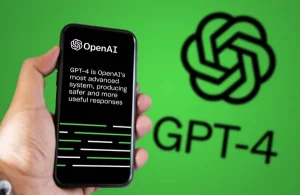GPT-4, with its multimodal capabilities, has been at the forefront of artificial intelligence (AI) developments. Now, a team of researchers has announced the creation of MiniGPT-4, an open-source model that performs complex vision-language tasks similar to its larger counterpart. Although OpenAI has confirmed GPT-4’s multimodal capabilities, they have yet to release the model’s image-processing abilities. MiniGPT-4 fills this gap by processing images alongside language using a more sophisticated Large Language Model (LLM).
Open-Source Components Powers the New Model
To construct MiniGPT-4, the researchers utilized Vicuna as a language decoder and the BLIP-2 Vision Language Model as a visual decoder. Vicuna and BLIP-2 are open-source technologies, further supporting the open nature of MiniGPT-4. Vicuna is built on the Large Language Model Meta AI (LLaMA). It is a state-of-the-art foundational language model designed to aid researchers in advancing their work in this AI subfield.
Given that OpenAI has not disclosed much information about GPT-4’s architecture, model size, hardware, training compute, dataset construction, or training method, MiniGPT-4’s open-source nature may prove particularly valuable to researchers.
Also Read: OpenAI Open-Sourced Its Consistency Models for AI Art Generation
MiniGPT-4 Capabilities Mirror Those of GPT-4
Researchers have revealed that MiniGPT-4 boasts many capabilities similar to GPT-4, including generating detailed image descriptions and creating websites from handwritten drafts. These skills demonstrate the potential for MiniGPT-4 to become a powerful tool in the AI landscape.
Exploring the Reasons Behind GPT-4’s Exceptional Performance
The underlying cause of GPT-4’s outstanding performance remains unclear. However, a recently published research paper suggests that the model’s advanced abilities could stem from using a more sophisticated Large Language Model (LLM). Previous research has shown that LLMs contain vast potential, generally absent in smaller models.
To further investigate this hypothesis, the authors proposed MiniGPT-4, an open-source model capable of executing complex vision-language tasks like GPT-4. As a more accessible alternative, MiniGPT-4 can facilitate further exploration of LLM capabilities in the AI research community.
Also Read: GPT-4 Capable of Doing Autonomous Scientific Research
Implications of MiniGPT-4 for AI Research and Development

Source: Imperial College London
The development of MiniGPT-4 has significant implications for AI research and development. Its open-source nature enables researchers to explore GPT-4’s capabilities more freely and advance their understanding of LLMs’ potential. In addition, MiniGPT-4’s ability to process images provides researchers with new opportunities to investigate the relationship between language and vision in AI models.
By offering a smaller, more accessible model for researchers to work with, MiniGPT-4 can drive innovation and advancements in AI technology. Furthermore, the model’s open-source foundation ensures the research community can collaborate and share their findings to further progress in the field.
Our Say
The introduction of MiniGPT-4 marks a significant step forward in AI, particularly regarding vision-language tasks. Its open-source design and its similarities to the more advanced GPT-4 model. This will provide researchers with a valuable tool for exploring LLM potential. It will also help understand the relationship between language and vision in AI models. As the AI landscape evolves, models like MiniGPT-4 will play a critical role in shaping the future of the field.
Learn More: The Future is Here: Rise of Artificial General Intelligence (AGI)






